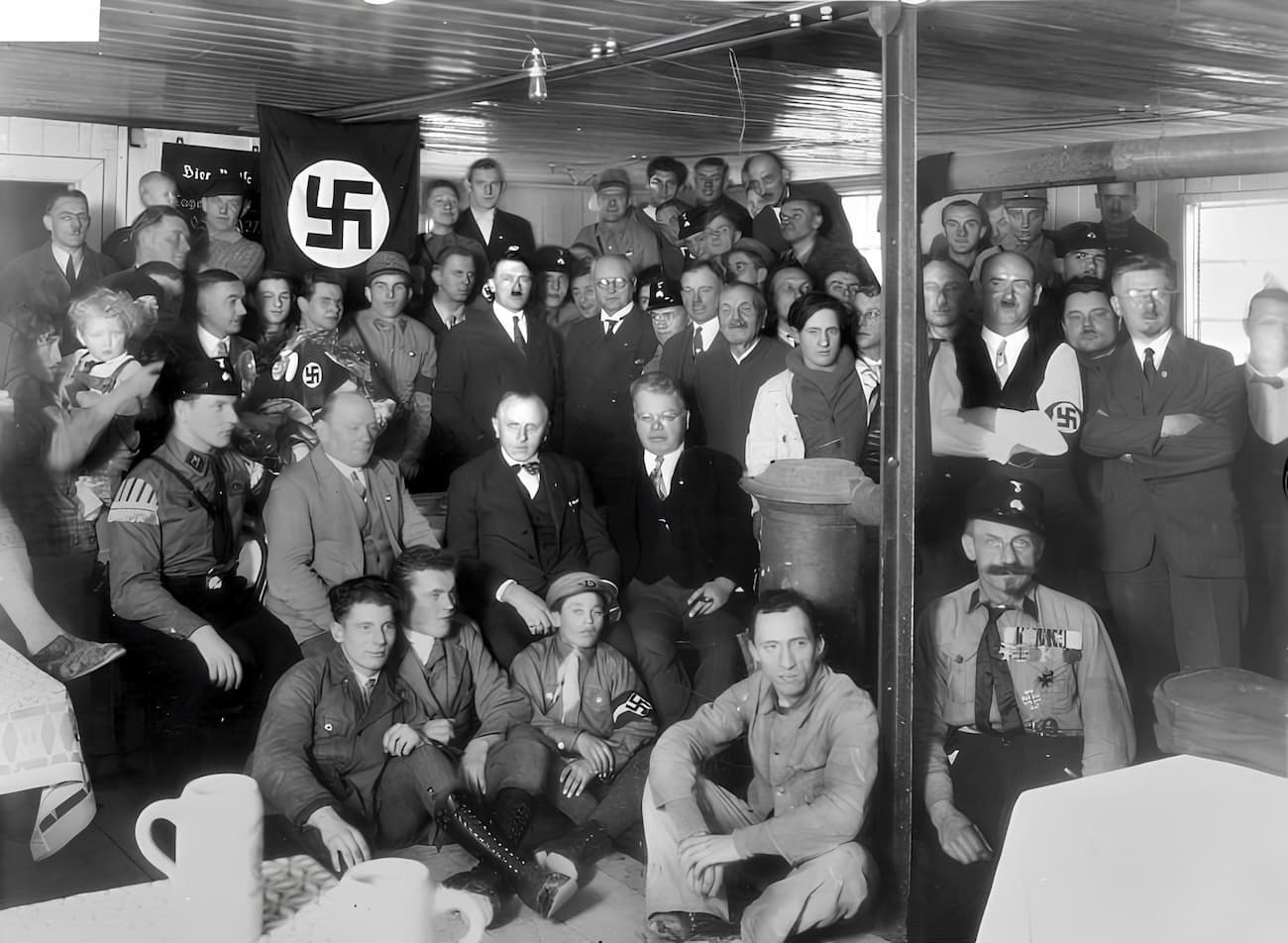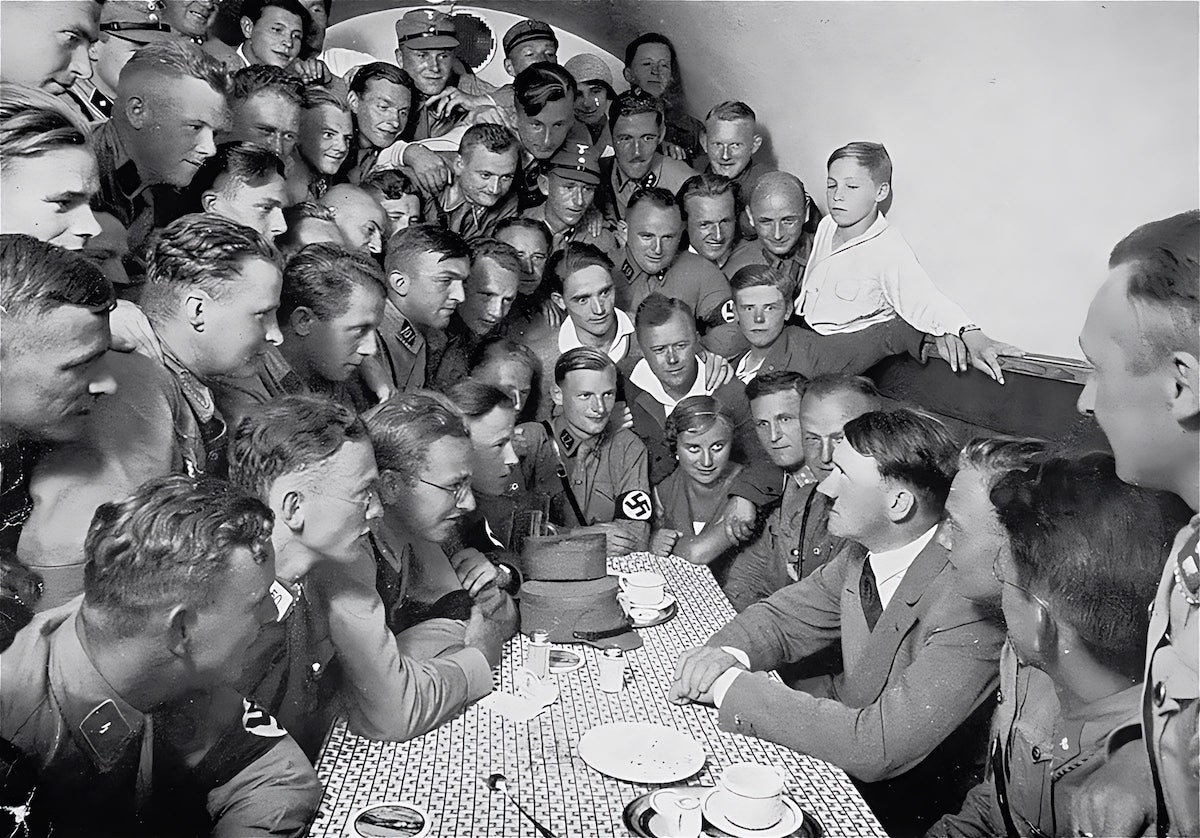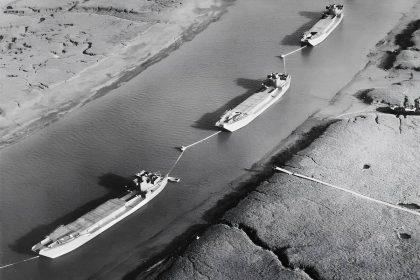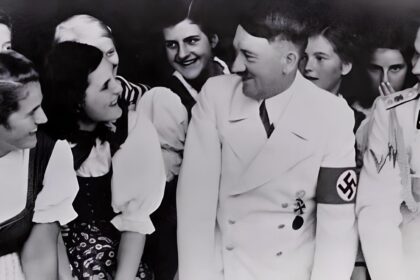Stalingrad, fought between German and Soviet armies from August 1942 to January 1943, is widely regarded as a defining moment of World War II. In the annals of military history, this conflict ranks among the most pivotal events of the twentieth century. The German armies’ advance into Soviet territory was halted thanks to the Soviet Union’s decisive victory in this titanic battle, in which both sides expended enormous resources. This defeat dealt a severe blow to the Axis powers and provided the Allies with a crucial psychological victory.
After the initial success of the German army’s invasion of the Soviet Union on June 22, 1941 (Operation Barbarossa), the front stabilized. The terrible fighting of the previous winter had left its mark on the German army, and by the spring of 1942, they still hadn’t recovered. Adolf Hitler, however, despite realizing that time was not on his side, decided to launch an offensive against the Soviets during the summer. The goal was to deal a fatal blow to the USSR by facilitating the seizure or neutralization of the oil wells in the Caucasus (Makop, Grozny, and Baku)—an old fixed idea of the Führer. The OKH (Army High Command) created the Blue Plan (Fall Blau) to achieve this goal.
Army Group South was the only unit given an offensive mandate under this plan, and it was tasked with using the same tactics that had proven so effective for the Germans. The infantry followed, destroying the resulting cauldrons created when the tanks and tactical aviation opened the way, devastated the rear, and ravaged the enemy logistic and command centers. From the Donets to the Volga, German mechanical formations showed their full might on the flat, open steppes and plains of southern Russia.
Several steps were required to fully implement the Blue Plan:
A: Two preliminary operations, the first of which involved Von Manstein’s 11th Army clearing the Crimea and the second of which involved the 6th Army and the 1st Armored Army reducing the Izium salient,
- I: The Soviet forces in the Voronezh region of the Don will be encircled by two claws from Kursk and Belgorod.
- II. The Red Army was once again surrounded in the Donets and Don regions, this time around the Millerovo area. The fighting forces will have to move along this river to the south.
- III: Three armies in the south of the device must move quickly east toward the Volga and meet up with the forces in phase II near the city of Stalingrad. The plan states, “In any case, we must try to reach Stalingrad or, at the very least, to place this city under the action of our heavy weapons, in order to eliminate it as a center of armament and communication.” The taking of Stalingrad is not a goal in itself but rather a means to an end in order to sever the flow of commerce on the Volga and secure the northern flank of the armies fighting in Phase IV.
B: The German forces will march on the Caucasus after completing the three preceding phases and destroying most of the Red Army’s positions in southern Russia. Army Group A (coming from Army Group South) had been tasked with completing this mission by conducting a motorized raid on Baku, a distance of more than 1,000 kilometers. Army Group B, a subset of Army Group South, will patrol the territory to the north of the rivers Don and Volga. Assigned to the Stalingrad sector was the 6th Army.
As of September 1942, the latter formation would be the most potent in all of Germany’s armed forces (Heer). There were 11 Infantry and Light Infantry Divisions (Chasseurs), 2 Motorized Divisions, 2 Armored Divisions (plus elements of another), nearly 1000 artillery pieces, and numerous multiple rocket launchers at its disposal back when it was composed of 4 corps.
General Paulus, a Hessian who was born in 1890 to a family of modest civil servants, oversaw the operation. As a relatively unknown lieutenant, he enlisted in the army in 1910 and eventually wed a Romanian nobility. The doors of opportunity await him after this marriage. Despite his weak health, he worked in the World War I staff offices. He was well-liked for being polite and levelheaded, as well as being a stickler for detail and an astute tactician. After Hitler came to power and remilitarized Germany, things took off for him professionally.
He took over as Chief of Staff of the Motorized Troops Directorate from Guderian in 1935. In 1939, he became General and Chief of Staff of the 6th Army. It was on May 28, 1940, that he personally accepted the surrender of the Belgian army. He rose to prominence after the French War and was appointed Quartermaster General. He was a key figure in the planning of the Barbarossa invasion. He assumed control of the 6th Army on January 5, 1942. He was now in charge of the army’s pride despite never having led a brigade personally.
The Blue Plan’s defeat
The Blue Plan was first put into action on June 28, 1942. German forces had four months to take control of the Caucasus region’s oil fields. A Soviet gadget stood between the German troops and Moscow, and although it was undoubtedly formidable, Stalin nevertheless prioritized the units fighting in the Moscow area. The Soviet leader was worried that the Germans would attempt to encircle their capital once again, this time from the south. As far as he was concerned, the Germans’ preparations for the Caucasus were only a sideshow. Due to this, the Germans had moderate success with the Blue Plan’s first three stages.
On July 25, they were barely a hundred kilometers from Stalingrad and had taken control of Rostov (the entrance to the Caucasus). A closer inspection, however, reveals that the Germans’ success was far from certain. The Wehrmacht, which had changed drastically since 1941, struggled to keep up with the frantic pace of the armored divisions due to a severe shortage of men and resources. In contrast to the wars of 1941, Soviet forces were able to break out of German encirclements and do considerable damage to the Heer, especially in urban settings.
Subtly, the campaign’s success and the hesitance of the German generals prompted Hitler to invest more in the conduct of operations, even if it meant reversing the primary objectives of the Blue Plan. Although the Führer had a keen strategic acumen, he was still a military amateur, and the continual pressure he was under caused him to lose touch with reality.
At the end of July 1942, it was already apparent that the German troops would be unable to successfully capture the Caucasus and defend the northern flank (along the Don and the Volga) of the forces that would be engaged there. Without backing down from the onslaught, Hitler severed resources from Army Group B to bolster Army Group A.
The 6th Army, tasked with ensuring the safety of the Stalingrad area, was forced to handle a larger front (about 300 km) with fewer men. Its progress towards its goal was hindered when its fuel source was cut.
Concurrently, Soviet forces started erecting a perimeter defense around Stalingrad. Holding the city was crucial for Stalin because he could then threaten the flank of the German advance in the Caucasus. A fixation point will provide the Red Army with precious time to organize a counterattack.
Eight days after Stalingrad’s front was created on July 12, 187,000 soldiers, 7,900 pieces of artillery, and 360 tanks were in place. The 62nd Army, which would shortly be led by Vassili Chuikov, was tasked with defending the city.
This commander understood how to keep close to his men despite his harsh demeanor and propensity for alcohol, since he had once been a peasant and a soldier like his seven siblings. He was the antithesis of Paulus in many respects. He was bold and instinctive, unconcerned by the uncertainties that plagued his German opponent. Krylov, a calm specialist in urban fighting, was the ideal chief of staff for this impulsive guy.
The Battle of Stalingrad
The seizure of Stalingrad was initially a secondary aim, but it quickly became a top priority for Hitler. Even if his Caucasian soldiers couldn’t win the fight, he intended to at least control the Volga’s supply lanes from north to south, which this massive weapons hub would do. Add psychological and political aspects to the mix of logistics, industry, and the like. Capturing the city that bears Stalin’s name would be a fantastic triumph for the propaganda of the Third Reich.
Stalin, who, like him, valued the city and was willing to give his life for it. The 6th Army’s advance into Stalingrad was arduous and time-consuming. The intense Soviet opposition was only one of several logistical challenges and Paulus’ doubts that slowed the invasion. Despite being severely depleted, the Luftwaffe (and especially the 4th air fleet under Von Richthofen) gave their all. Even worse, on August 23, it wiped out a sizable portion of the city (killing many tens of thousands of residents in the process) and turned the area into a barren wasteland. The Soviet troops will battle valiantly among the rubble.
On September 13, 1942, the Nazi invasion of the city started. The front on which most of the combat took place was just around 10 kilometers long. Paulus gave his men two major goals to accomplish:
- The kurgan Mamayev is a man-made hill (an old Scythian burial place) that rises 102 meters above the surrounding area and provides a breathtaking panorama of the Volga and the city’s northern reaches (the district of the big factories).
- The primary Volga River docking area is where Soviet soldiers battling in the heart of the city receive reinforcements and supplies (62nd and 64th armies).
Paulus, a veteran of mechanized military operations on a grand scale, attempted to adapt his strategies to an entirely new environment. At first, it seemed that the Soviets’ resistance had been broken by the barrage of fire that had been unleashed against them. Chuikov, who narrowly escaped death on many occasions, briefly considered giving up hope that the city was still intact.
In spite of this, the Soviet soldier displays remarkable resilience in street combat, in the midst of wreckage, in the basements, and on the floors of half-collapsed buildings. Battalions at a time danced in a lethal ballet to seize control of a block or a factory. The area around the train station changed hands 15 times in the span of a week. Mines, IEDs, and anti-tank weapons all proved effective against German tanks. When it came to daring, the snipers on both sides were equal, and the number of knife strikes was untallyable.
Eventually, Paulus controlled 90% of the city after two months of brutal fighting and enormous sacrifice (several Soviet divisions perished in barely 24 hours). By November 1942, Chuikov’s 62nd Army had been reduced to 47,000 soldiers and 19 tanks and had been split into three divisions. The defenses at the center landing stage and the Kamayev kurgan were still up, but the surviving forces were depleted and fatigued. The sanitation was terrible; hundreds of injured people were dying because they couldn’t get medical attention; and the ammo was nearly gone.
While it seemed like Stalingrad was about to lose, Chuikov was certain that it would not. As expected, Operation Uranus will kick off on the 19th.
Uranus and the encirclement of the 6th Army
The Soviet Union launched its massive counteroffensive known as Operation Uranus in 1942. Its conception in September 1942 owed a great deal to careful, high-caliber planning. It was reminiscent of the Wehrmacht’s massive offensives in many ways. The German troops in Stalingrad were surrounded from both the north and the south by heavy artillery, tanks, and airplanes.
The mastermind behind this operation, Georgi Zhukov, accomplished a remarkable achievement in only two months. While keeping his plans hidden from the Wehrmacht, Hitler amassed a million soldiers, 900 tanks, 13,500 pieces of artillery, and more than a thousand aircraft in the region designated for the operation. The German intelligence community, despite repeated warnings, nevertheless refused to accept the possibility that the Soviet attack would be successful.
And yet, the Axis’ defenses were particularly porous where the brunt of the Soviet onslaught was to be carried out. Following Hitler’s instructions, the 6th Army continued fighting at Stalingrad despite being flanked by units of dubious defensive strength. In the beginning, the Soviets would be fighting against Romanian divisions, whose troops were less well-equipped and less determined than the German ones. Despite the lack of strength in their anti-tank capabilities, these forces maintained wide areas.
The 3rd Romanian army (7 divisions), guarding the 6th Paulus army’s northern flank, came under attack around 7:30 a.m. Moscow time, after receiving the code word “Siren.” The attack lasted for 80 minutes. Three Soviet troops struck the Romanian lines at 8:50 a.m., after the Romanians had been badly frightened by the preceding barrage of fire (which was said to have been heard for 100 km around). By day’s end, 27,000 Romanian troops had been captured, and the remnants of the German 22nd Armored Division had been killed or captured while attempting to rescue the Romanians. Just three days later, in Kalatch, the two Soviet pincers converge, trapping Paulus’ force within a region no wider than 60 kilometers. There were around 1,250 guns and 140 armored vehicles trapped, along with about 260,000 troops (9,500 of them were Romanians).
At tremendous expense, Paulus’s army maintained control of many airfields crucial to its supply chain. However, it can no longer function for any purpose outside protection. There was a severe lack of gasoline, the tanks had stalled, and the ammo was nonexistent. The 6th Army lost all logistical support when it was separated from its rear and supply depots. Any effort at an independent escape would be doomed to fail under these circumstances. Paulus remained trapped until assistance arrived to free him.
The agony of the 6th German army
Hitler did have faith in the surrounded forces’ ability to put up a fight. Goering, Luftwaffe chief, informed him that an airlift could be employed to resupply the 6th Army. Even Marshal von Manstein saw the situation positively after being summoned by the Führer. After all, hadn’t the Luftwaffe rescued 100,000 stranded German troops in the Demiansk pocket the previous winter?
Thanks to the airlift, the 6th Army was able to hold its ground until Manstein assembled the requisite troops to evacuate the area.
The airlift, however, was a complete failure. For the Sixth Army to maintain its position, the Luftwaffe would need to drop about 350 tons of supplies daily. Goering’s crew only managed to produce 100 tons per day on average. Because of insufficient numbers, poor maintenance, and inadequate airstrip size, transport aircraft were unable to meet the needs of the operation. The Soviets, aided by potent flak, ferociously defended the skies over Stalingrad.
The pocket’s men were in an increasingly dire condition. In order to make it through the brutal Russian winter, the troops had to ration their food and ammunition. The battalions fighting the increasingly bold Soviet soldiers were wiped out by frostbite and sickness.
The Winter Storm (Wintergewitter), the operation to free Manstein, was not looking promising. The scheme was direct and merciless. It was imperative that the 6th army keep its positions elsewhere while the 4th armored army pushed the Soviet soldiers protecting the pocket’s south-western half.
Stalingrad was to be used as a staging area for the 1943 attack Hitler planned, so he had no intention of leaving it. To Manstein’s dismay, this plan was implemented instead of his preferred withdrawal of the 6th Army from the city. In the heat of the moment, he initiated the “Winter Storm” operation, certain that he could persuade Hitler of the validity of his beliefs.
The German armored forces had early successes, but Manstein saw that the campaign was doomed from the start. On December 16th, the Soviets began their operation Saturn. Manstein’s left flank was attacked, which may have resulted in an encirclement. To prevent an even larger catastrophe, the Marshal’s only objective was to save his own men.
The Battle of Stalingrad was a turning point in the war
Demoralized by his failure to conquer the city and seeing the same effects of hunger on his soldiers, Paulus either did not know, could not, or did not dare to try a forcible escape. In order to do this, Hitler would have had to give up the positions his army had fought so hard to gain at Stalingrad. The fate of the 6th Army’s warriors was sealed when their horses were devoured, leaving them with no means of transportation.
More than a month would pass before their agony ended. The German forces made an effort to thwart the Soviets’ last, decisive move, known as Operation Koltso. Piece by piece, the 6th army’s divisions withdrew, abandoning the airfields that had been their lifeline. Hitler and Manstein, seeing the futility of the situation, ordered Paulus and his soldiers to hold out for as long as they could. Their deaths would likely paralyze a large portion of the Soviet armed forces, buying precious time for the German soldiers fighting in the south to retreat and break out of an encirclement.
Hitler goes so far as to give Paulus the Marshal’s baton in an effort to have him deny any kind of submission. He believed that by pressuring him to commit suicide, he might inspire his men (up to that point, no Feldmarshall had ever surrendered). Forces that had already been reduced to ghostly apparitions after voluntarily surrendering to the Soviets.
It had been a week since Paulus had been in command of operations when he surrendered on January 31, 1943. In fact, he was so down that he didn’t even take part in the surrender discussions, which were handled by his subordinates, who were desperate to salvage everything they could. The Red Army took over one hundred thousand captives. They were sent to detention camps with terrible living conditions. In February of 1943, 17,000 people lost their lives, and just 5,000 people made it back to Germany. The Red Army wouldn’t have even had enough food to sustain itself.
The triumph at Stalingrad, a fight mythologized by Soviet propaganda, had repercussions all across the globe. It was a catastrophe for the German nation and had been remembered as a watershed moment in World War II ever since. Nonetheless, the Wehrmacht managed to withstand the Red Army’s assault for another 26 months after this fight. A demonstration, if one were needed, that the event, grave as it was, could not have been a game-changer in the conflict.
Still, the Soviet troops will have learned the painful lessons essential for their ultimate triumph in the city’s shattered streets, by the rivers of blood that would have been shed for its defense, and by the prodigies deployed to surround the 6th army.
What is the death toll from the Battle of Stalingrad?
Historians disagree on an exact figure, but many agree that over a million Soviets died in the conflict, the vast majority of them civilians (about 300,000 dead). The death toll estimates vary from 700,000 to 800,000 on the Axis side, which comprised not only the Germans but also the Croats, the Hungarians, the Romanians, the Italians, and the Italians. About 91,000 German captives were captured by the Soviets and imprisoned in appalling circumstances; by the spring of 1943, approximately half of them had perished.
Bibliography:
- Craig, William (1973). Enemy at the Gates: The Battle for Stalingrad. New York: Penguin Books. ISBN 0-14-200000-0.
- DiMarco, Louis A. (20 November 2012). Concrete Hell: Urban Warfare from Stalingrad to Iraq. Osprey Publishing. ISBN 9781782003137.
- Weinberg, Gerhard (2005). A World at Arms: A Global History of World War II. Cambridge: Cambridge University Press. ISBN 978-0-521-55879-2.
- Kehrig, Manfred (1974). Stalingrad. Stuttgart: Deutsche Verlags-Anstalt. ISBN 3-421-01653-4.
- Kershaw,
- Kehrig, Manfred (1974). Stalingrad. Stuttgart: Deutsche Verlags-Anstalt. ISBN 3-421-01653-4.
- Ian (2000). Hitler: 1936–1945: Nemesis. London: Penguin Books. ISBN 978-0-14-027239-0.
- Werth, Alexander (1946). The Year of Stalingrad. London.






